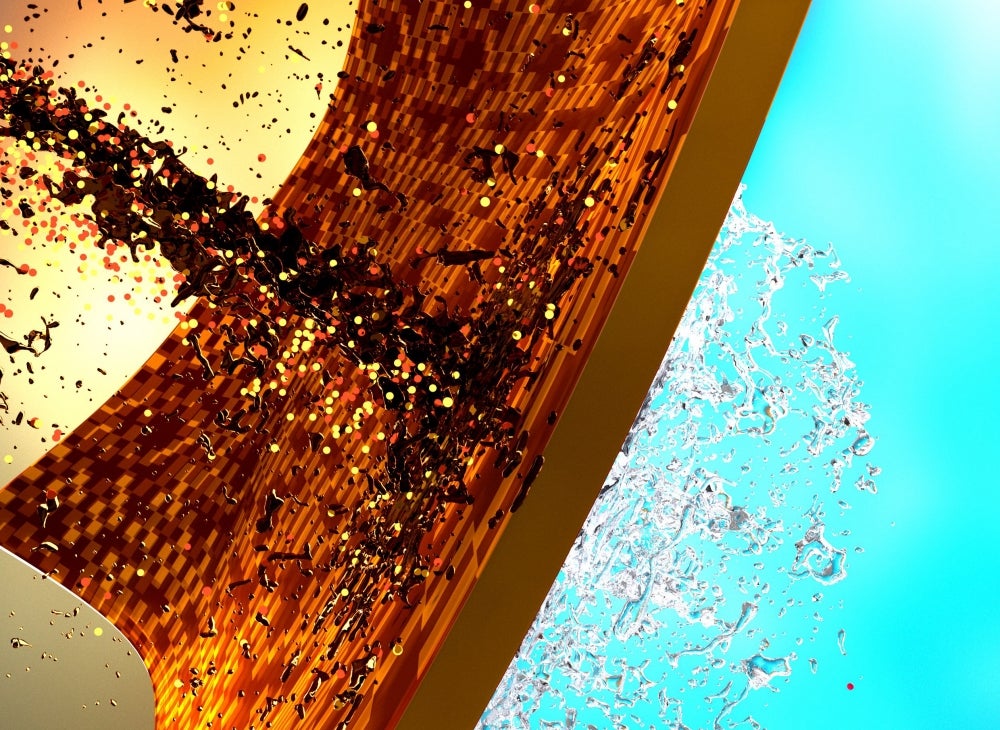
Computing Clean Water

Water is perhaps Earth’s most critical natural resource. Given increasing demand and increasingly stretched water resources, scientists are pursuing more innovative ways to use and reuse existing water, as well as to design new materials to improve water purification methods. Synthetically created semi-permeable polymer membranes used for contaminant solute removal can provide a level of advanced treatment and improve the energy efficiency of treating water; however, existing knowledge gaps are limiting transformative advances in membrane technology. One basic problem is learning how the affinity, or the attraction, between solutes and membrane surfaces impacts many aspects of the water purification process.
“Fouling — where solutes stick to and gunk up membranes — significantly reduces performance and is a major obstacle in designing membranes to treat produced water,” said M. Scott Shell, a chemical engineering professor at UC Santa Barbara, who conducts computational simulations of soft materials and biomaterials. “If we can fundamentally understand how solute stickiness is affected by the chemical composition of membrane surfaces, including possible patterning of functional groups on these surfaces, then we can begin to design next-generation, fouling-resistant membranes to repel a wide range of solute types.”
Now, in a paper published in the Proceedings of the National Academy of Sciences (PNAS), Shell and lead author Jacob Monroe, a recent Ph.D. graduate of the department and a former member of Shell’s research group, explain the relevance of macroscopic characterizations of solute-to-surface affinity.
“Solute-surface interactions in water determine the behavior of a huge range of physical phenomena and technologies, but are particularly important in water separation and purification, where often many distinct types of solutes need to be removed or captured,” said Monroe, now a postdoctoral researcher at the National Institute of Standards and Technology (NIST). “This work tackles the grand challenge of understanding how to design next-generation membranes that can handle huge yearly volumes of highly contaminated water sources, like those produced in oilfield operations, where the concentration of solutes is high and their chemistries quite diverse.”
Solutes are frequently characterized as spanning a range from hydrophilic, which can be thought of as water-liking and dissolving easily in water, to hydrophobic, or water-disliking and preferring to separate from water, like oil. Surfaces span the same range; for example, water beads up on hydrophobic surfaces and spreads out on hydrophilic surfaces. Hydrophilic solutes like to stick to hydrophilic surfaces, and hydrophobic solutes stick to hydrophobic surfaces. Here, the researchers corroborated the expectation that “like sticks to like,” but also discovered, surprisingly, that the complete picture is more complex.
“Among the wide range of chemistries that we considered, we found that hydrophilic solutes also like hydrophobic surfaces, and that hydrophobic solutes also like hydrophilic surfaces, though these attractions are weaker than those of like to like,” explained Monroe, referencing the eight solutes the group tested, ranging from ammonia and boric acid, to isopropanol and methane. The group selected small-molecule solutes typically found in produced waters to provide a fundamental perspective on solute-surface affinity.
The computational research group developed an algorithm to repattern surfaces by rearranging surface chemical groups in order to minimize or maximize the affinity of a given solute to the surface, or alternatively, to maximize the surface affinity of one solute relative to that of another. The approach relied on a genetic algorithm that “evolved” surface patterns in a way similar to natural selection, optimizing them toward a particular function goal.
Through simulations, the team discovered that surface affinity was poorly correlated to conventional methods of solute hydrophobicity, such as how soluble a solute is in water. Instead, they found a stronger connection between surface affinity and the way that water molecules near a surface or near a solute change their structures in response. In some cases, these neighboring waters were forced to adopt structures that were unfavorable; by moving closer to hydrophobic surfaces, solutes could then reduce the number of such unfavorable water molecules, providing an overall driving force for affinity.
“The missing ingredient was understanding how the water molecules near a surface are structured and move around it,” said Monroe. “In particular, water structural fluctuations are enhanced near hydrophobic surfaces, compared to bulk water, or the water far away from the surface. We found that fluctuations drove the stickiness of every small solute types that we tested. ”
The finding is significant because it shows that in designing new surfaces, researchers should focus on the response of water molecules around them and avoid being guided by conventional hydrophobicity metrics.
Based on their findings, Monroe and Shell say that surfaces comprised of different types of molecular chemistries may be the key to achieving multiple performance goals, such as preventing an assortment of solutes from fouling a membrane.
“Surfaces with multiple types of chemical groups offer great potential. We showed that not only the presence of different surface groups, but their arrangement or pattern, influence solute-surface affinity,” Monroe said. “Just by rearranging the spatial pattern, it becomes possible to significantly increase or decrease the surface affinity of a given solute, without changing how many surface groups are present.”
According to the team, their findings show that computational methods can contribute in significant ways to next-generation membrane systems for sustainable water treatment.
“This work provided detailed insight into the molecular-scale interactions that control solute-surface affinity,” said Shell, the John E. Myers Founder’s Chair in Chemical Engineering. “Moreover, it shows that surface patterning offers a powerful design strategy in engineering membranes are resistant to fouling by a variety of contaminants and that can precisely control how each solute type is separated out. As a result, it offers molecular design rules and targets for next-generation membrane systems capable of purifying highly contaminated waters in an energy-efficient manner.”
Most of the surfaces examined were model systems, simplified to facilitate analysis and understanding. The researchers say that the natural next step will be to examine increasingly complex and realistic surfaces that more closely mimic actual membranes used in water treatment. Another important step to bring the modeling closer to membrane design will be to move beyond understanding merely how sticky a membrane is for a solute and toward computing the rates at which solutes move through membranes.
The research was performed as part of the Center for Materials for Water and Energy Systems (M-WET), an Energy Frontier Research Center supported by the U.S. Department of Energy. The collaborative partnership includes researchers at UCSB, the University of Texas at Austin, and the Lawrence Berkeley National Laboratory.



